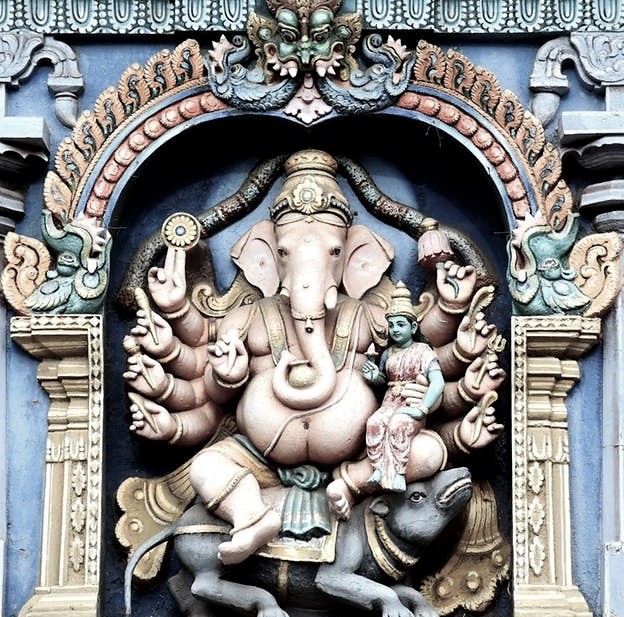- Special FeaturesFoundation Year10th CenturySthala TreeTheerthamRathamArchitectureType - Kalinga architecture Completed - 950–975 CEOther Speciality
- Sthala Puran
The Mukteswar Temple is a 10th century temple and is famous for its granite construction.
The gleaming beauty of the Mukteswar temple is one of the most pleasant expressions of the Kalinga style of architecture.
The temple is known as the 'Jewel of Orissa architecture’.
The Mukteswar temple has some of the most intricately decorated carvings.
The domed entrance makes one mesmerized. It displays a superb mixture of Hindu, Buddhist and Jain features that find a common platform in much of the Orissa temple technique.
The Mukteswar temple has an 11-meter high tower.
Mukteswar means the lord who offers freedom through the practice of yoga.
There is a small water pond between the temple and the road. The pond is known as Marichi Kund.
- Architecture
This architecture is one of the basic reasons why Mukteshvara Temple is also known as the "Gem of Odisha architecture" or "Kalinga Architecture". The temple faces west and is constructed in a lower basement amidst a group of temples. The pyramidal roof to the Jaganmohan present in the temple was the first of its kind over the conventional two-tier structure. The temple is a small one compared to other larger temples in Bhubaneswar. The temple is enclosed within an octagonal compound wall with elaborate carvings on it. It is believed that the experiment of a newer pattern in the temple showed a mature phase compared to its predecessors and culminated at the beginning of replication of a similar pattern in the later temples in the city. The temple has a porch, called Torana, which acts as the gateway to the octagonal compound. The temple has two structures namely, the vimana (structure above the sanctum) and a mukhasala, the leading hall, both of which are built on a raised platform. The temple is the earliest to be built in the pithadeula type.
The doorway to the inner sanctum houses the image of Ketu with three hooded snakes, commonly regarded as the ninth planet in the Hindu mythology. There is a tank in the eastern side of the temple and a well in the south-western corner. A dip in the first known as the Marichi Kunda is believed to cure infertility in women. There are other shrines within the temple complex with lingam inside, which were used as offering shrines. The doorway of the temple is ornate. The temple is enclosed by a low compound wall that follows the contours of the temple. The temple has sculptures both inside and outside the structure. The compound walls leaves a very small passage separating the shrine.
- Alankar of Deity
- Prayers and BenefitsSpecial Vratas and Prayers
The numerous images of Lakulisha are found in miniature forms within Chaitya arches, showing various mudras like yoga, Bhumispara and vyakyana with yogapatta tied to their knees. They are accompanied by the images of the disciples. According to tradition, barren women give birth to sons if they take a dip in the Marichi Kunda tank in the premises of the temple on the night before Ashokashtami car festival. On the evening, the water in the tank is sold to the public.
Offerings to DeityStotras and Mantras
- FestivalsMukteshwar Dance FestivalThe Department of Tourism of the state government organizes a three-day yearly dance function called Mukteswar Dance Festival in the temple premises. This festival celebrates the features of Odissi, the classical dance form of Odisha and Odissi music, the classical music of the same tradition. Popular Odissi dancers perform during the function, accompanied by musical instruments like mardala. The event is a webcast in the state government portal.Ashokashtami
- Sodasha Upcharas
- Prasadhas
- Social ActivitiesAnnadhanMarriageEar BoringHead ShaveDanaasEducation FacilitiesSocial DrivesOther Activities
- Arjita Seva
- Tags

